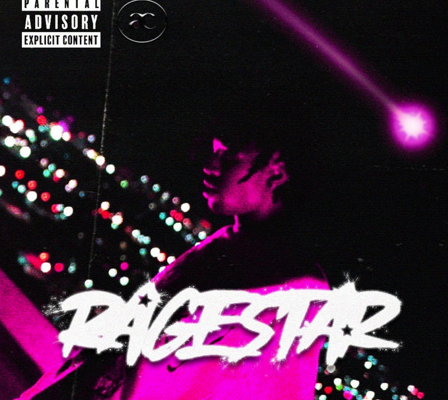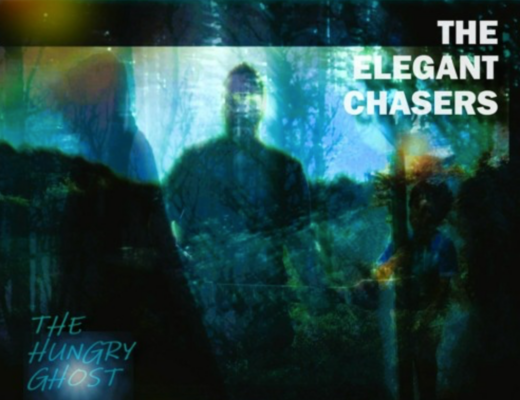In this interview, Flame opens up about the deeply emotive core of Pride of the Lamb, an EP that embraces vulnerability, introspection, and the raw intensity of human emotion. With a soundscape influenced by the atmospheric depths of Thom Yorke, which carries the cinematic touch of Ramin Djawadi, Flame crafts music that resonates with those who seek a profound connection through sound. We explore how production techniques, vocal expression, and thematic storytelling shape the EP’s immersive impact, as well as the role of resilience and self-reflection in Flame’s songwriting. From discussing the influence of Porcupine Tree and Alice In Chains to revealing the creative process behind capturing such expressive depth, this conversation offers insight into the layers of meaning woven throughout Pride of the Lamb.
Flame, welcome to A&R Factory, it’s a pleasure to have you with us to discuss your new EP, Pride of the Lamb, and the emotive themes you’ve instilled into your music. Your reflective style resonates with deeply expressive vocals, and it’s fascinating how your compositions echo the atmospheric influence of Thom Yorke and the sweeping cinematic qualities reminiscent of Ramin Djawadi. From the first note, there’s a sense of raw honesty in your approach, hinting at an intent to connect with listeners on a shared emotional wavelength. How do you capture the tenderly reflective tone that defines your sound, and what key elements do you think contribute most to establishing that emotional depth?
Hello Amelia,
Thank you so much for having me. And thank you for such precious compliments!
The making of Pride of the Lamb was a very intense and emotional journey. It is the very first body of work in which I decided to get lost without necessarily trying to find a way out. I think that sense of determined journeying was key to creating a visceral emotional bond with every element of the music.
Production was another stage of the creative journey where I found a path to creating that intense emotional depth and a connection between myself and my audience. During production, I sought to create a space with my music where emotions could flourish and be free – I would envisage this dark, almost void-like space, which would then be lit up by a thousand shades of colour reflective of the emotions passing through my lyrics and vocals. I was chasing this idea of a space that could be infinite yet intimate at the same time; composing and performing in a way that felt right in capturing the expression of my soul.
Your vocals carry intense emotive weight. Is there a method or mindset you adopt to ensure your voice remains genuinely expressive rather than simply polished?
Before recording the vocals for each song, my producer, Etain Sweeney, would talk me through the meaning of my song. And as I sat on the floor, or on her bed, or in the studio where all these conversations took place, I’d find myself spiralling, trying to find a perfect answer to her question because it was never one I had asked myself. My focus had always been the conjuring and exorcism of the emotions I was feeling rather than a clear cause or single meaning.
But her questions prompted greater introspection – taking me back to the point of creation and examining the situations and events that prompted the emotions I felt. I think is what keeps the vocals so intentionally primal, raw and unpolished, that emotionally focused mindset, rather than the one of creating perfect notes. Sometimes, overthinking isn’t necessarily a bad thing!
When did the concepts of resilience, grace and growth become the focal points for your songwriting, and did you face any internal resistance while exploring such honesty?
The realisation of those concepts didn’t occur to me until much later in the production of this EP. Although the songs were written in different moments of my life, I always felt that there was something connecting them – a red thread running throughout that only appeared when I stepped back to view the tapestry of the work as a whole. That thread was the difficulty I faced in connecting these moments, the painful recollections that glue them together.
I guess those focal points were almost a result of the difficulty I found in expressing my emotions in such a raw and unvarnished way. I was excited to bring something new to the world, and yet that something came as a result of heartache, solitude, healing, and a natural journey of resilience, grace, and growth.
Who are your main influences, and how do you balance these influences without overshadowing the unique nuances that make your sonic signature distinct?
I have many different influences, with Porcupine Tree, Alice In Chains, Dave Matthews Band, and The Cranberries being the major ones.
Despite being very different sonic landscapes from each other and from my own, I try to focus on what is real about their music. My mind often reflects on how, when, what and why they – among many other artists – wrote what they wrote. I soak my soul in what their music leaves me, and I try to do the exact same in my own world and words, even though I do occasionally take the liberty of adding a little referral Easter egg.
In what ways do you use instrumentation, arrangement, or production techniques to create an immersive sense of empathy and reflection for your audience?
I like the idea of using many intertwining layers that could complement each other’s presence through reverberation. It’s how these layers communicate with each other that gives space for empathy and emotions. Automations and customised plug-ins are great for these things.
I also experimented with different acoustic spaces, recreating the atmosphere of particular places like McEwan’s Hall in Edinburgh through impulse responses and convulsions to fully immerse the audience in my world. It sounded wonderful, but I chose a different route for this release, as although it perfectly echoed the emotions I was aiming to recreate, the vocals and instrumentation lost some of the colour which I felt more importantly fostered that emotional empathy and connection in my audience.
However, I have been working a lot in Dolby Atmos and convolutions for upcoming music, and this experimentation brings emotions on a whole new, immersive level.
Watch this space!
You touch on raw emotion and self-discovery through pain. How do you stay open to these themes in your day-to-day life, and what compels you to channel them into music?
I don’t always find it easy to confront certain emotions or themes in my day-to-day life, but I’ve realised over the course of this EP, that it is necessary and fundamental to what I do. I resonate a lot with Shakespeare in perceiving art as holding up a mirror to ourselves, and this unflinching musical honesty gives me a sort of strength to truly feel, examine, and face these difficulties in my daily existence. I am who I am, might as well face it to embrace it. It is actually kind of funny the way that during and after the production, I felt myself charged with so much love and appreciation for all the people that stayed and that are in my life. I am eternally grateful to be able to love and feel loved.
And that it is exactly what pushes me to not just song write for myself, but share my music, is the idea of somebody out there feeling what I feel, and can relate, so that when they hear my words, they don’t feel like they have to face whatever challenge or dream might be in front of them alone.
Do you approach songwriting as a form of storytelling, and how do you keep the stories cohesive across an entire EP?
Songwriting has always been my emotional outlet, but I didn’t fully embrace it until about 6 years ago. My approach to songwriting functions as a method of carving these emotional encounters into my memories, encounters which can be brought back to life any time I play those songs again.
With this intention, I have found that while the creation or production of a song may fade into distant memory, the lingering taste of the emotional experience that triggered it remains. It is also fascinating how, in some cases, the initial meaning evolves into something more relatable to events closer to the present time, bringing a whole new emotional experience to the table.
As I mentioned earlier, although the songs were written at different times, they had that joining red thread which kept a sort of narrative flowing through, a cohesive theme which has been an elusive will o’ the wisp for me to put a name to.
The EP as a whole is not so much a storytelling piece but an exploration of the process of opening up to people who then, through whatever means, betray that vulnerability and fade from your life without ever taking accountability for the pain they caused. When I take a step back to look at the work now, I see more than just pain, but progress from my original headspace and growth in my willingness to love unconditionally.
‘On Tape’ is the conceptual closure of the EP, coming after all that pain that’s been let out. I’m just glad I was able to create something out of it. It is what I take away with me when paths divide.
Pride of the Lamb feels particularly personal. Would you say it marks a turning point in how willing you are to share the vulnerable aspects of your own life, or has that honesty always been at the core of your artistry?
Pride of the Lamb was actually the last song I wrote on the EP, and you’re right; it is very personal and makes me feel very vulnerable.
It talks about the sensation of home, which, to me, often feels like being a spectator in both somebody else’s life and my own. It reflects on that constant ache—the desire to move backward or forward in time, to change things, to skip the present—caught in the delusion that we alone could somehow alter the course of things.
In the end, I know the choices of others aren’t mine to make. All I can do is face my own reflection with courage and honesty while watching them build their lives in their own way.
Stream the Pride of the Lamb EP on Spotify now. Find other ways to connect with Flame via this link.
Interview by Amelia Vandergast




No Comments